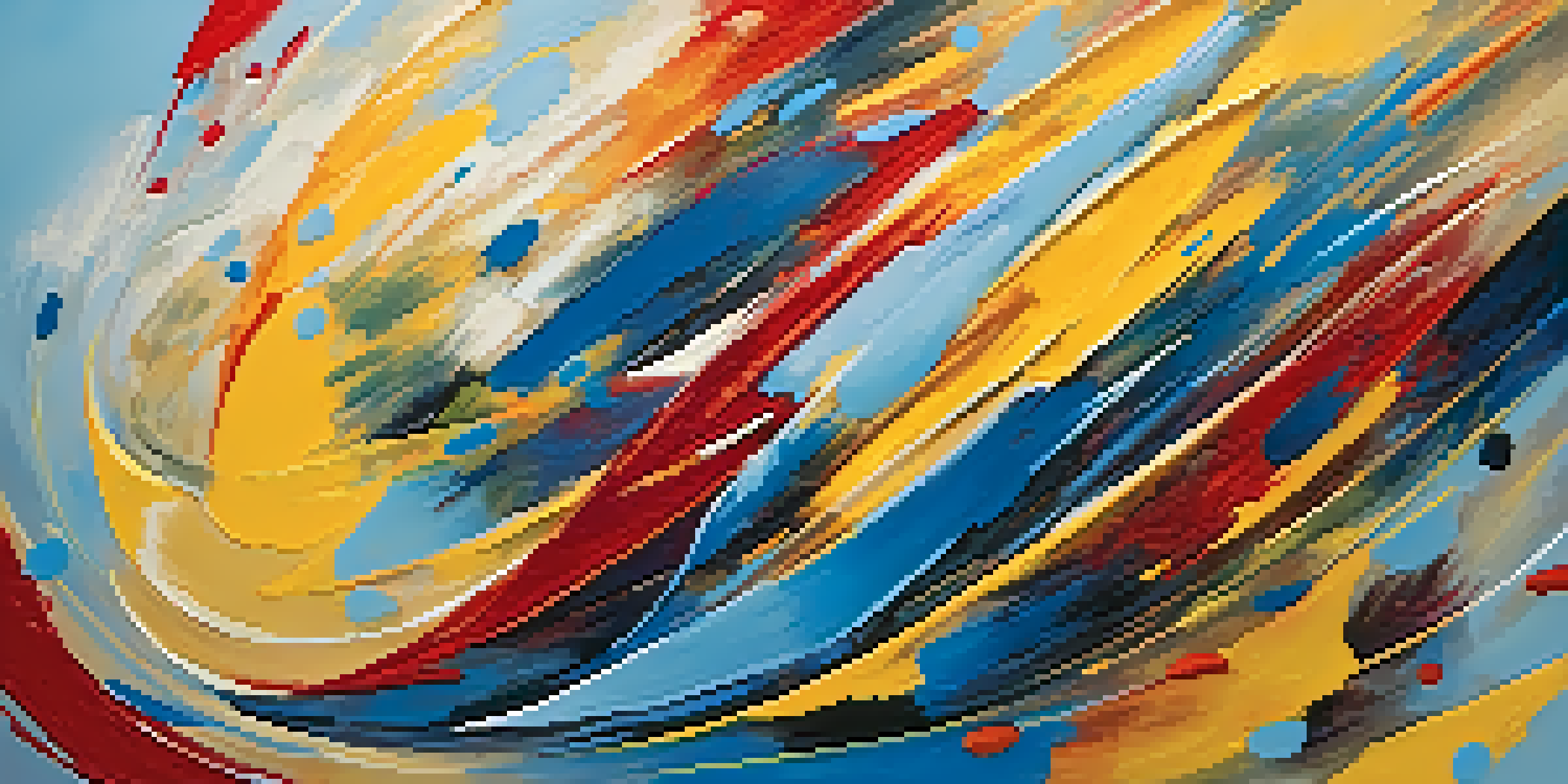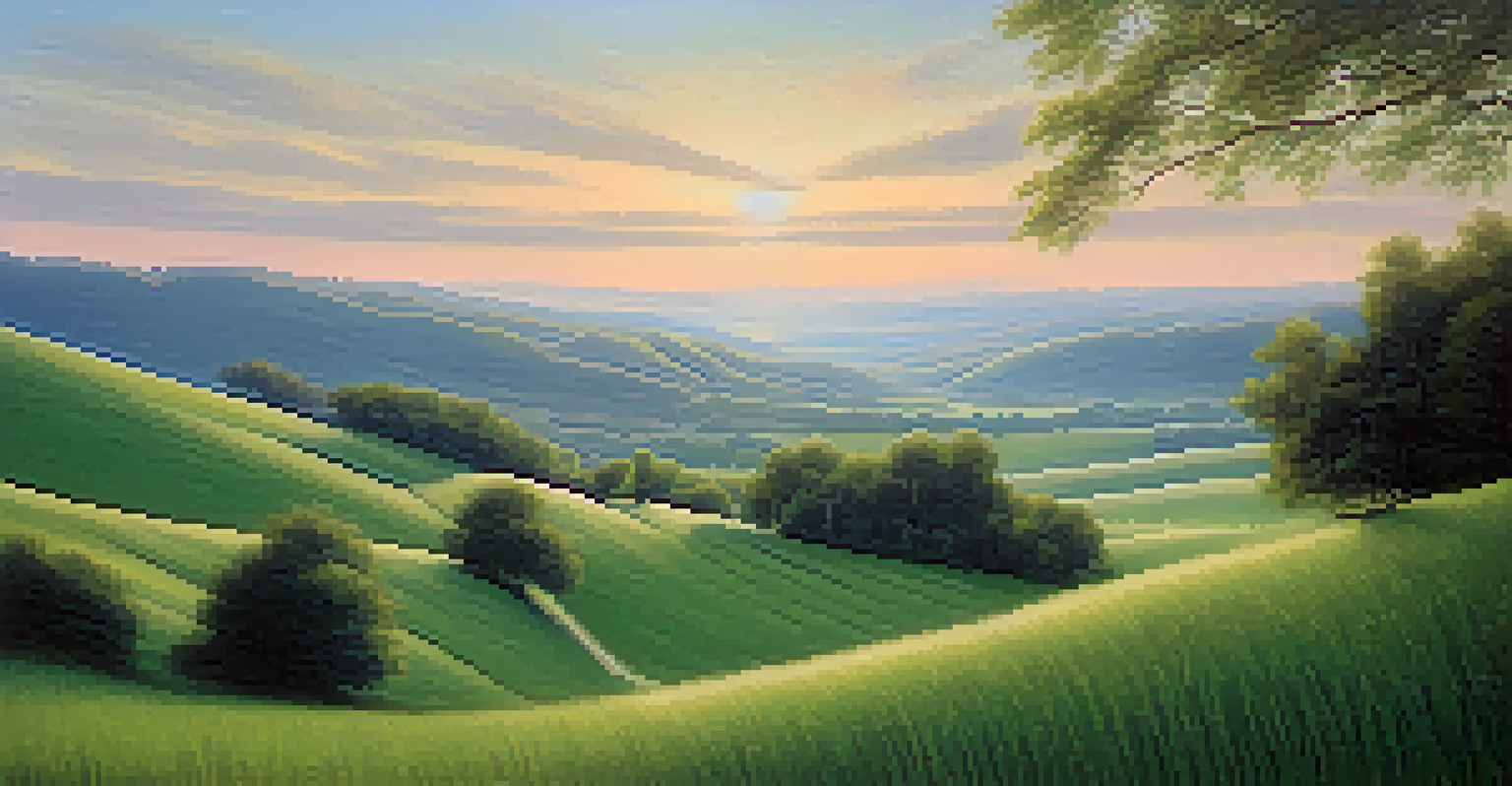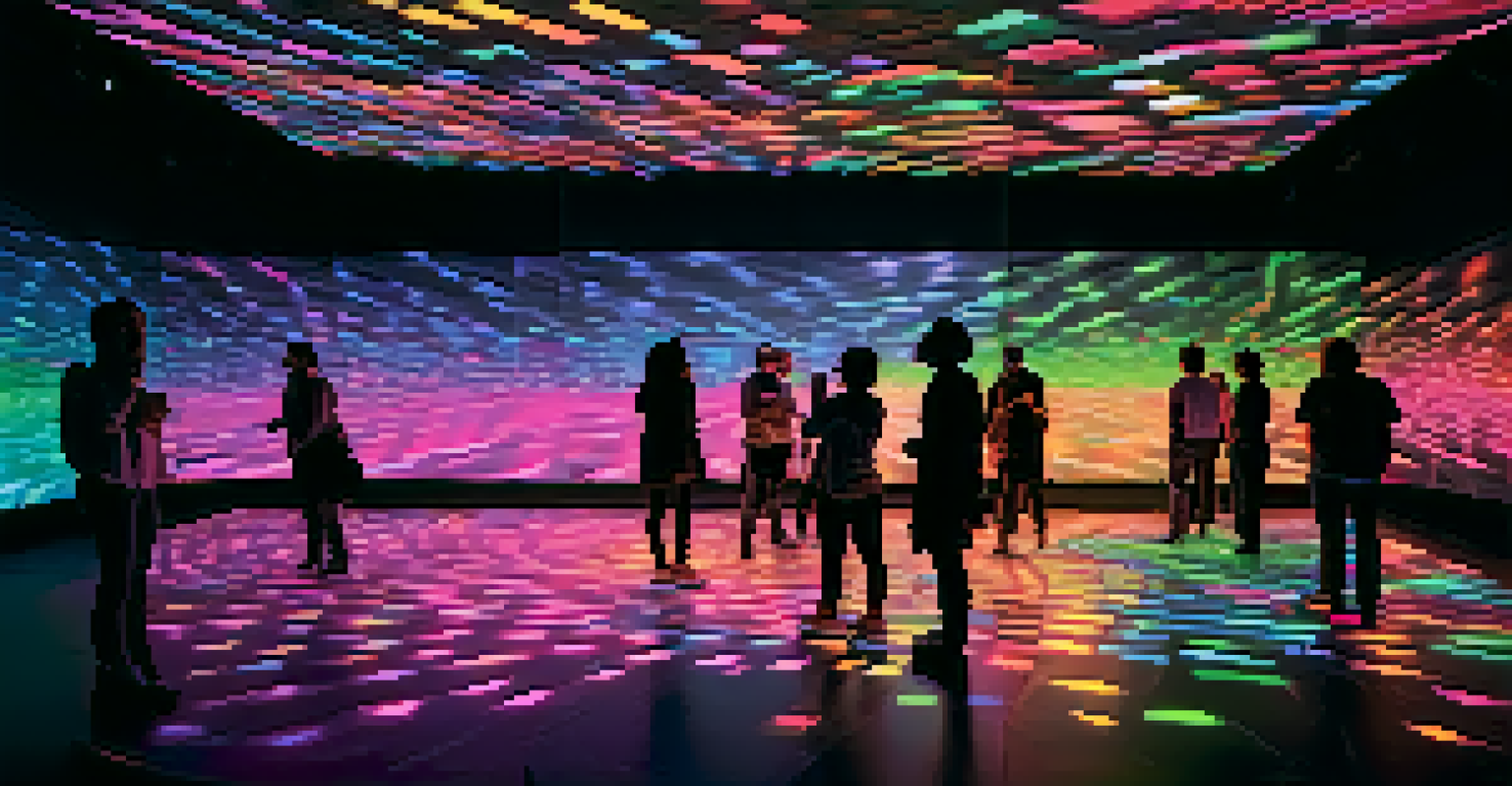The Influence of Music on Abstract Visual Art Techniques

The Relationship Between Music and Visual Art
Music and visual art have long shared a bond, influencing and inspiring each other. For artists, music can evoke emotions and ideas that translate into visual forms. This connection often leads to intriguing pieces that resonate with both the mind and the heart.
Color is the keyboard, the eyes are the harmonies, the soul is the piano with many strings.
When an artist listens to music while creating, the rhythm, melody, and harmony can guide their brushstrokes and color choices. Just like a dancer moves to a beat, an artist may find their hands flowing in sync with the sounds around them. This interaction can lead to spontaneous creativity, giving birth to unique abstract works.
Many renowned artists have expressed how certain compositions or genres ignite their imagination. For instance, the chaotic energy of jazz might inspire bold, erratic brushwork, while classical melodies could lead to more structured and fluid designs. This interplay enriches the creative process and deepens the viewer's experience.
How Different Genres Influence Artistic Techniques
Different music genres evoke distinct emotions and can influence art techniques in unique ways. For example, the driving beat of rock music might lead to dynamic, high-energy brush strokes, while the soothing sounds of ambient music could result in softer, more fluid forms. This variety allows artists to explore diverse techniques based on their musical preferences.

Genres like classical or folk music often encourage artists to adopt more traditional techniques, focusing on composition and balance. On the other hand, electronic music can push artists toward experimental methods, encouraging them to break conventions and embrace abstraction more fully. Each genre serves as a different lens through which an artist can view their work.
Music Enhances Artistic Expression
The relationship between music and visual art allows artists to channel emotions and ideas into their creations.
As artists navigate their creative journey, they often curate their playlists based on the desired emotional outcome of their pieces. This tailored approach not only enhances their focus but also allows them to create art that resonates with the feelings evoked by the music they choose to accompany their work.
Using Music as a Motivational Tool in Art Creation
Many artists turn to music as a motivational tool to enhance their creative flow. The right playlist can make the difference between a productive session and a creative block. When artists immerse themselves in music that inspires them, they often enter a state of 'flow' where creativity seems to flourish effortlessly.
Art must be an integral part of life, a part of music and painting, of nature and of human beings.
For instance, an artist may find that upbeat tunes help them work faster and more boldly, leading to striking abstract pieces. Conversely, slower, more melodic music can encourage introspection, resulting in contemplative artwork that invites viewers to pause and reflect. This adaptability showcases the power of music in shaping artistic expression.
Moreover, music can be a source of comfort and companionship while working alone. The rhythms and melodies create an atmosphere that feels less isolating, allowing artists to channel their thoughts and feelings into their work. This emotional connection can be particularly vital in the abstract art realm, where personal expression is key.
The Role of Rhythm and Flow in Abstract Art Techniques
Rhythm plays a crucial role in both music and visual art, influencing how artists apply techniques in their work. Just as a musician adheres to a beat, an artist may find themselves guided by the rhythm of the music, creating patterns and flows in their pieces. This synchronization can result in artwork that feels alive and vibrant.
For example, an artist might use quick, rhythmic brush strokes to mimic the tempo of an upbeat song, leading to a lively composition filled with movement. In contrast, a more languid rhythm could inspire slower, deliberate marks that create a sense of calm or introspection. The interplay between rhythm in music and visual expression opens a world of creative possibilities.
Genres Shape Artistic Techniques
Different music genres influence artists' techniques, inspiring them to explore diverse styles based on the emotions evoked by the music.
Ultimately, the rhythm establishes a connection between the viewer and the artwork, allowing them to feel the energy or tranquility that the artist intended. This dynamic relationship underscores the influence of music on abstract art techniques, highlighting how sound and sight can harmoniously coexist.
Color Choices Inspired by Musical Elements
Color is a fundamental aspect of both music and visual art, and artists often draw inspiration from musical elements to make their color selections. For instance, a lively, upbeat song might inspire an artist to choose bright, vibrant colors, while a melancholic tune could lead to a palette of muted, darker hues. This connection helps convey the emotions associated with the music through visual means.
Moreover, the concept of synesthesia, where one sensory experience involuntarily triggers another, plays a fascinating role in this relationship. Some artists experience colors when they hear certain sounds, allowing them to create art that reflects their unique sensory perceptions. This phenomenon showcases the deep intertwining of music and visual art.
As artists experiment with color influenced by music, they can create compositions that resonate on multiple levels. The choice of color becomes a visual representation of emotions experienced through sound, enriching the viewer's experience and inviting them to engage more deeply with the artwork.
Famous Artists Who Embrace Music in Their Work
Throughout history, many acclaimed artists have intertwined their work with music, showcasing its profound impact on their creative processes. For example, Wassily Kandinsky, a pioneer of abstract art, often drew inspiration from music, believing that colors and shapes could evoke similar emotional responses as melodies and harmonies.
Another notable example is the American artist Jackson Pollock, whose energetic drip paintings reflect the rhythms of jazz music. Pollock's work embodies the spontaneity and improvisation inherent in jazz, demonstrating how musical influences can shape an artist's technique and style. These connections highlight the rich dialogue between music and visual art.
Future of Art and Music Collaboration
As technology advances, the collaboration between music and abstract art is evolving, creating immersive experiences that merge sound and visuals.
These artists not only exemplify the relationship between music and abstract art but also inspire contemporary creators to explore their musical influences. As artists today continue to draw from diverse musical genres, they contribute to a vibrant conversation that celebrates the creativity that arises from this unique synergy.
The Future of Music and Abstract Art Collaboration
As technology evolves, the collaboration between music and abstract art continues to grow, paving the way for exciting new opportunities. Digital platforms, virtual reality, and interactive installations allow artists to explore this relationship in innovative ways. These advancements encourage a more immersive experience for the audience, where sound and visuals merge seamlessly.
For instance, artists can create multimedia installations that respond to live music, creating a dynamic interplay between the two forms. This fusion not only captivates viewers but also challenges traditional boundaries, inviting them to engage with both music and art in fresh ways. The future holds endless possibilities for this creative partnership.

Ultimately, the ongoing exploration of how music influences abstract art techniques promises to enrich both fields. As artists continue to embrace this synergy, they will unlock new dimensions of creativity, inviting audiences to experience art through a multi-sensory lens that intertwines sound and sight. This collaboration is a testament to the power of artistic expression, transcending genres and mediums alike.